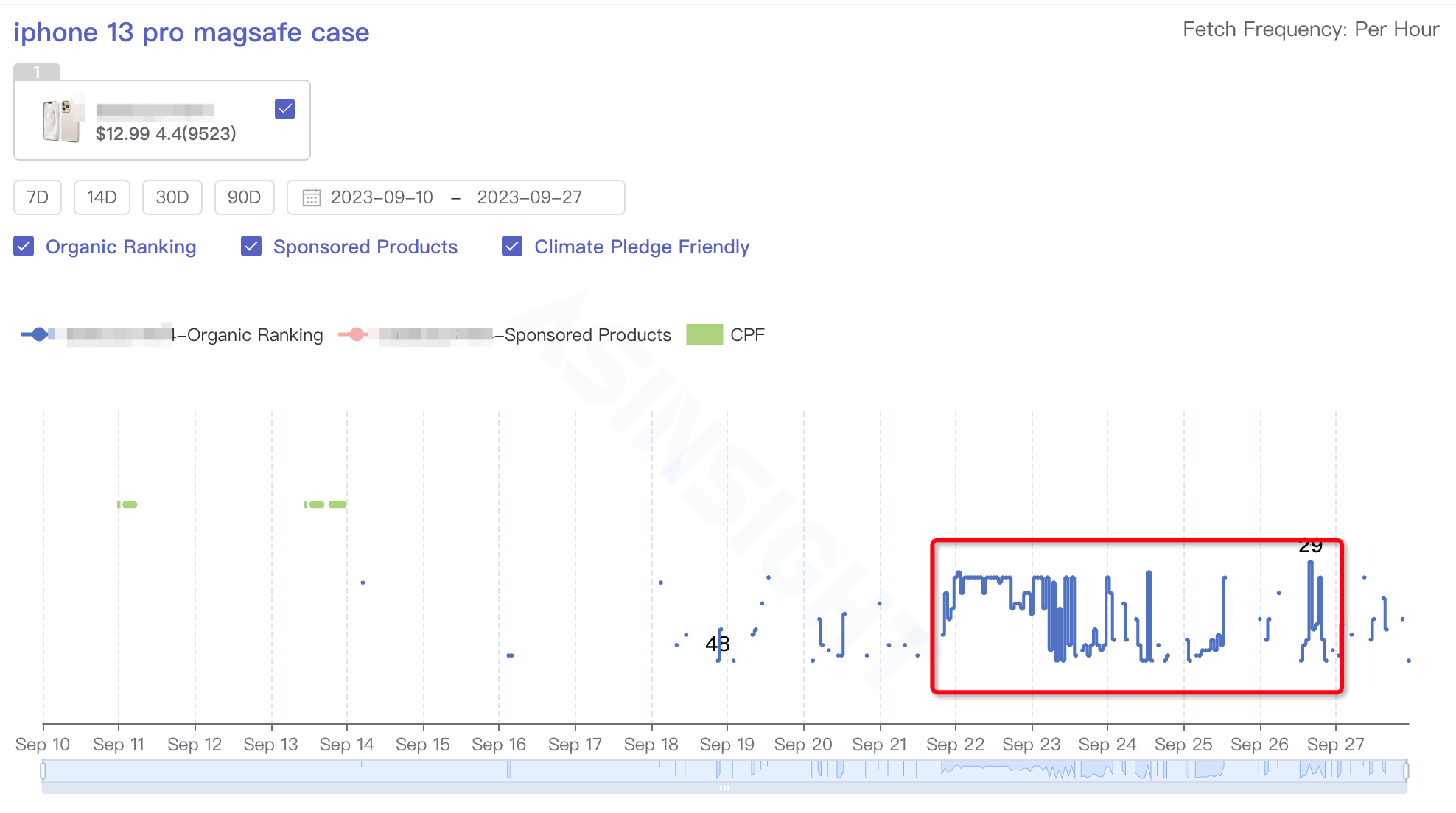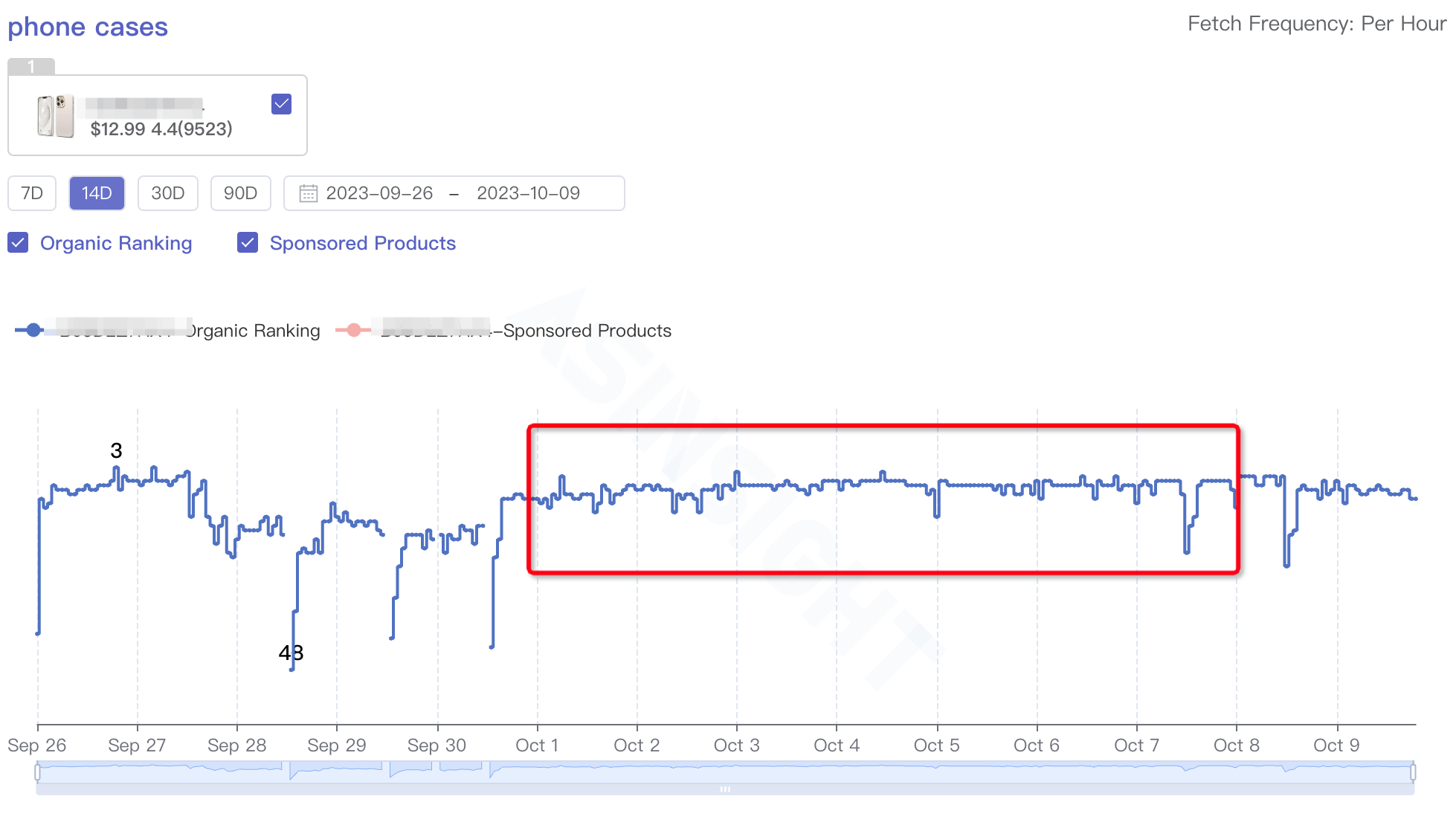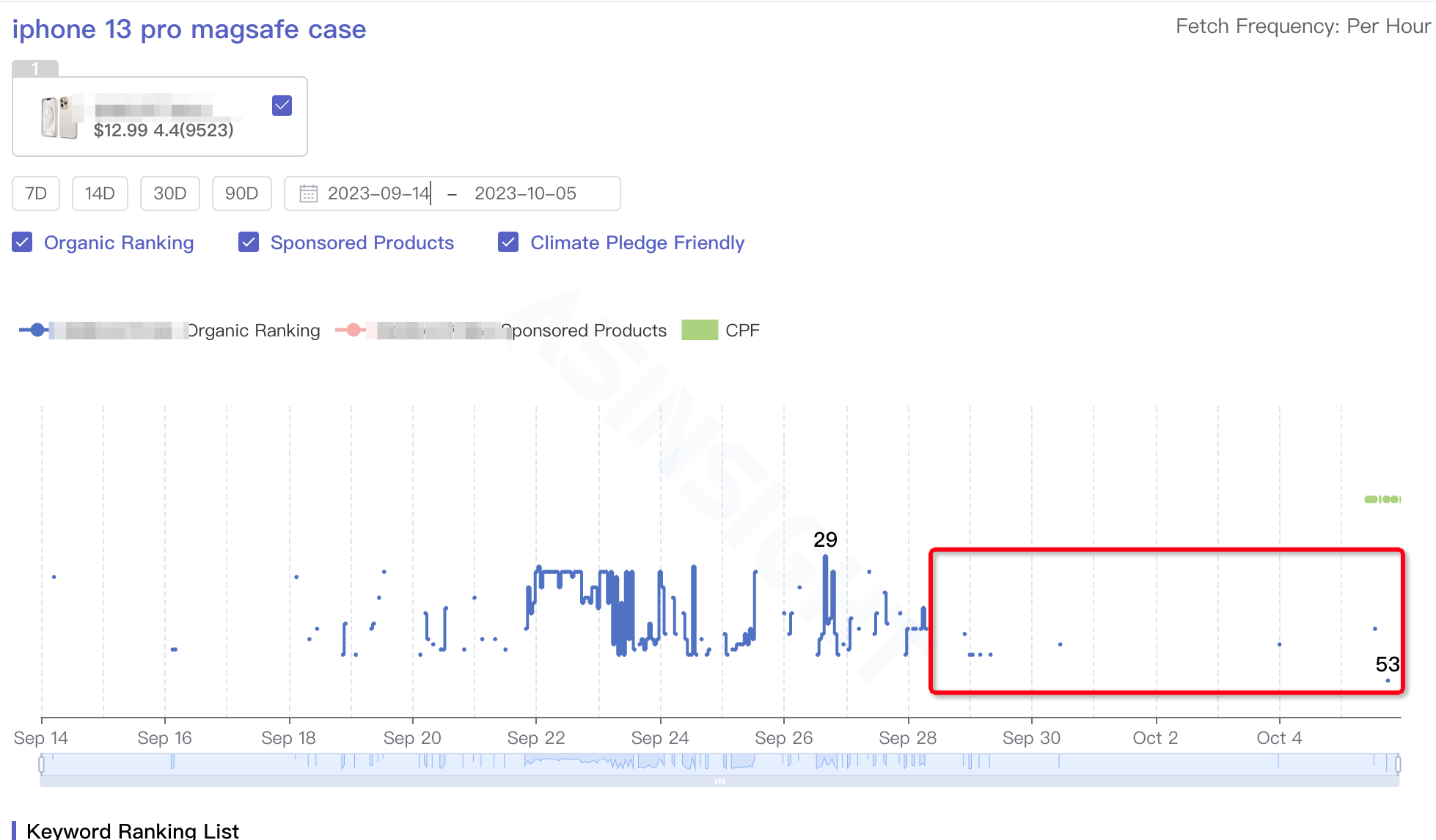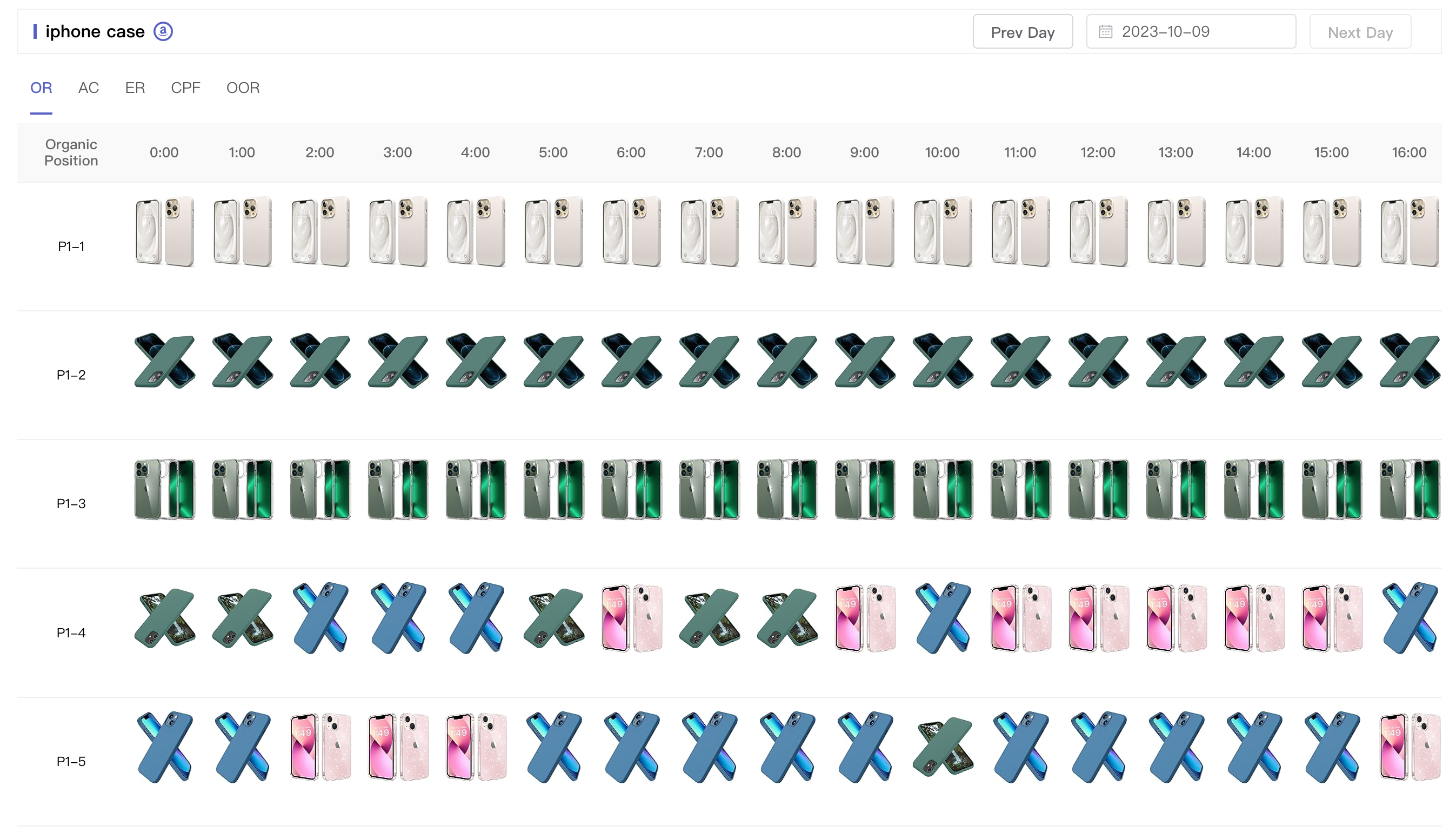Unveiling the A9 Algorithm Traffic Distribution Rhythm: Hourly Ranking Data to Help You Succeed Faster!

We all recognize that the A9 algorithm ranks ASINs based on relevance to keywords, click-through rates, conversion rates, ratings, and more. However, as an algorithm engineer, besides rankings, I also focus on another question: What is the rhythm of ASIN ranking updates? Or, to look at it from another angle, how does the A9 algorithm allocate traffic to each ASIN?
Let's delve into how the A9 algorithm distributes traffic to ASINs.
When your product, especially a new one, is listed under a keyword, the system allocates a small amount of traffic to assess the product's quality score. This initial phase, characterized by sparse hourly ranking trend graphs with few points, is known as the Sparse Period. Here, ASIN rankings on the first three pages are thinly scattered.
Imagine selling iPhone cases and your product sporadically appears on the first three pages of search results for a few hours each day. This is akin to trying to catch your dance partner's attention at a ball, but they only notice when your dance moves are particularly eye-catching.
Part 1: Sparse Period
When your product, especially a new one, is listed under a keyword, the system allocates a small amount of traffic to assess the product's quality score. This initial phase, characterized by sparse hourly ranking trend graphs with few points, is known as the Sparse Period. Here, ASIN rankings on the first three pages are thinly scattered.
Imagine selling iPhone cases and your product sporadically appears on the first three pages of search results for a few hours each day. This is akin to trying to catch your dance partner's attention at a ball, but they only notice when your dance moves are particularly eye-catching.

(Sparse Period: Sporadically appears on the first three pages of search results for a few hours.)
Part 2: Oscillation Period
If you perform well during this stage, congratulations! You're about to enter the next phase—Amazon starts sending more traffic your way. This is similar to getting recognition for your dance moves at the party, and more people start noticing you, offering you more exposure.
However, rankings can fluctuate significantly during this phase, as click-through rates are highly dependent on position. The system experiments with your placement to calculate click-through rates at different positions accurately, thereby determining your product's quality score without positional bias.
This phase, marked by substantial ranking volatility, is called the Oscillation Period.

(Oscillation Period: Rankings fluctuate dramatically, undergoing traffic testing.)
Part 3: Stability Period
Assuming you excel during this testing phase, you'll secure a stable, prominent ranking, akin to finding your spot on the dance floor and enjoying the ball.
This phase is known as the Stability Period, characterized by consistent, stable rankings.

(Stability Period: Consistent rankings after fluctuations, indicating good performance)
Conversely, underperforming at this stage means your traffic gets withdrawn, dropping you back into the Sparse Period, where you must again find your footing.

(After fluctuations in ranking, poor performance will lead to sporadic ranking trends.)
Therefore, capitalizing on the window when your product is listed within the first three pages is crucial. Enhancing your product's click-through and conversion rates is essential for better rankings.
Additionally, an interesting discovery through our Organic Rotation Tracker reveals that the higher the ranking, the smaller the fluctuation; conversely, the lower the position, the greater the volatility. Therefore, if you have the opportunity to secure a top position, seize it. Otherwise, you'll remain caught in intense competition.


(Image source: "Organic Rotation Tracker" feature of ASINSIGHT)
Our analysis highlights the significant daily variations in product rankings under keywords. The importance of hourly ranking data becomes clear, justifying the higher costs of crawling and storage to capture these insights. Only through hourly data collection can we accurately gauge the product's phase and make the most appropriate decisions.
Lastly, we emphasize that hourly ranking data is now available to all users. Start your journey of hourly ranking analysis, and Amazon's party awaits you! 🕺💃